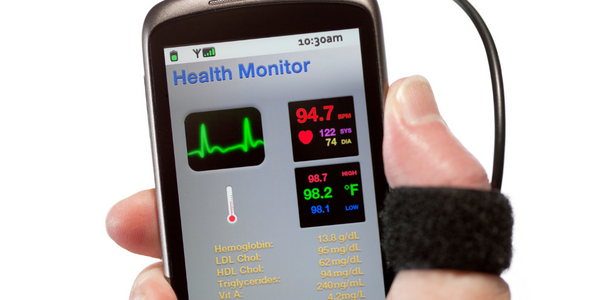Technology Category
- Application Infrastructure & Middleware - Middleware, SDKs & Libraries
- Cybersecurity & Privacy - Security Compliance
Applicable Industries
- Cement
- Healthcare & Hospitals
Applicable Functions
- Quality Assurance
Use Cases
- Building Automation & Control
- Time Sensitive Networking
Services
- System Integration
About The Customer
Coronis Health is a revenue cycle management company that serves healthcare facilities of all sizes nationwide. The company leverages over 50 applications to support their 1,500+ customers. The operations teams are responsible for completing highly specific tasks for both. The company's 11-person Analytics team documents these processes for the 10,000+ employees across Coronis’ client base to follow. Coronis Health works with healthcare clients and regularly handles a lot of personally identifiable information (PII), making it critical that patient data never ends up in their process documentation.
The Challenge
Coronis Health, a revenue cycle management company, was facing a significant challenge in managing and documenting their processes. With over 50 applications to support their 1,500+ customers, the operations teams were responsible for completing highly specific tasks. These processes were manually documented in Word or PDFs, which was labor-intensive and time-consuming. The lack of a single source of truth led to discrepancies in how things were done across Coronis and their clients, causing frustration and inefficiency. The company needed a process documentation solution that was simple, scalable, and compliant.
The Solution
Coronis Health adopted Scribe as their new standard for process documentation. The company's most important processes were mapped out as a baseline for building new Scribe content. The task of documenting all operational processes became feasible with Scribe. The company also set a precedent that any replicable task should be documented in a Scribe, standardizing the format for process documentation and saving time. The Analytics team used Scribe to answer support tickets, reducing the time to completion. They created a large library of Scribes for common requests, reducing the number of repetitive requests. Scribe also enabled Coronis employees to answer their own questions, improving efficiency. The company also used Scribe to transfer tasks to offshore teams, overcoming bottlenecks due to different time zones and lack of proper explanation. To ensure patient data never ended up in their process documentation, Coronis set up an internal approval process for their Scribes.
Operational Impact
Quantitative Benefit

Case Study missing?
Start adding your own!
Register with your work email and create a new case study profile for your business.
Related Case Studies.

Case Study
System 800xA at Indian Cement Plants
Chettinad Cement recognized that further efficiencies could be achieved in its cement manufacturing process. It looked to investing in comprehensive operational and control technologies to manage and derive productivity and energy efficiency gains from the assets on Line 2, their second plant in India.

Case Study
Hospital Inventory Management
The hospital supply chain team is responsible for ensuring that the right medical supplies are readily available to clinicians when and where needed, and to do so in the most efficient manner possible. However, many of the systems and processes in use at the cancer center for supply chain management were not best suited to support these goals. Barcoding technology, a commonly used method for inventory management of medical supplies, is labor intensive, time consuming, does not provide real-time visibility into inventory levels and can be prone to error. Consequently, the lack of accurate and real-time visibility into inventory levels across multiple supply rooms in multiple hospital facilities creates additional inefficiency in the system causing over-ordering, hoarding, and wasted supplies. Other sources of waste and cost were also identified as candidates for improvement. Existing systems and processes did not provide adequate security for high-cost inventory within the hospital, which was another driver of cost. A lack of visibility into expiration dates for supplies resulted in supplies being wasted due to past expiry dates. Storage of supplies was also a key consideration given the location of the cancer center’s facilities in a dense urban setting, where space is always at a premium. In order to address the challenges outlined above, the hospital sought a solution that would provide real-time inventory information with high levels of accuracy, reduce the level of manual effort required and enable data driven decision making to ensure that the right supplies were readily available to clinicians in the right location at the right time.

Case Study
Gas Pipeline Monitoring System for Hospitals
This system integrator focuses on providing centralized gas pipeline monitoring systems for hospitals. The service they provide makes it possible for hospitals to reduce both maintenance and labor costs. Since hospitals may not have an existing network suitable for this type of system, GPRS communication provides an easy and ready-to-use solution for remote, distributed monitoring systems System Requirements - GPRS communication - Seamless connection with SCADA software - Simple, front-end control capability - Expandable I/O channels - Combine AI, DI, and DO channels

Case Study
Driving Digital Transformations for Vitro Diagnostic Medical Devices
Diagnostic devices play a vital role in helping to improve healthcare delivery. In fact, an estimated 60 percent of the world’s medical decisions are made with support from in vitrodiagnostics (IVD) solutions, such as those provided by Roche Diagnostics, an industry leader. As the demand for medical diagnostic services grows rapidly in hospitals and clinics across China, so does the market for IVD solutions. In addition, the typically high cost of these diagnostic devices means that comprehensive post-sales services are needed. Wanteed to improve three portions of thr IVD:1. Remotely monitor and manage IVD devices as fixed assets.2. Optimizing device availability with predictive maintenance.3. Recommending the best IVD solution for a customer’s needs.

Case Study
HaemoCloud Global Blood Management System
1) Deliver a connected digital product system to protect and increase the differentiated value of Haemonetics blood and plasma solutions. 2) Improve patient outcomes by increasing the efficiency of blood supply flows. 3) Navigate and satisfy a complex web of global regulatory compliance requirements. 4) Reduce costly and labor-intensive maintenance procedures.








